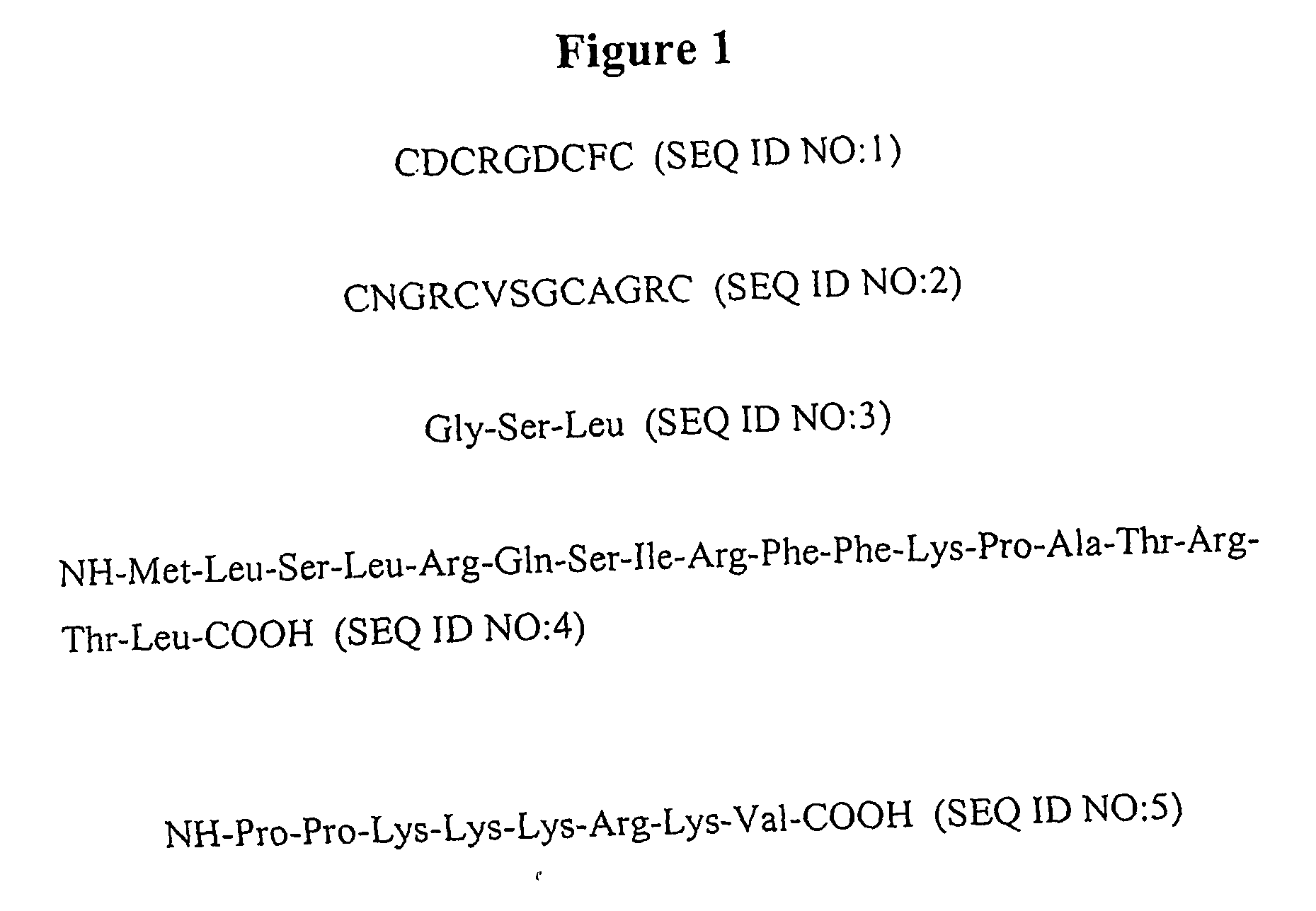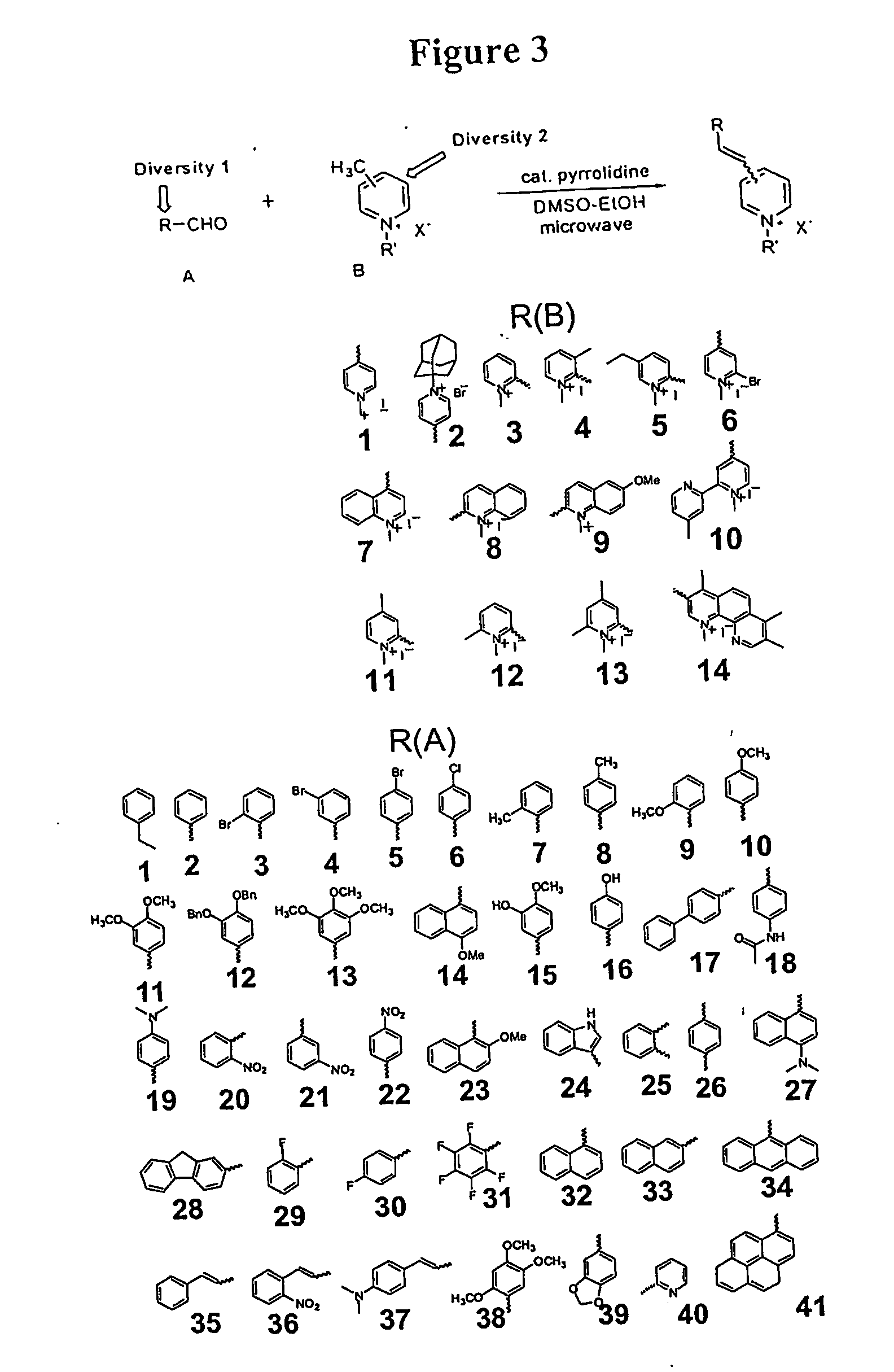Chemical address tags
a technology of chemical address tags and address tags, applied in the field of chemical address tags and subcellular localization, can solve the problems of inability to target, exclude, limit the clinical usefulness of many otherwise potently effective drugs and therapeutic agents, and traditional drug design strategies and lead optimization approaches have not addressed the problem of targeting drugs to particular subcellular locations
- Summary
- Abstract
- Description
- Claims
- Application Information
AI Technical Summary
Benefits of technology
Problems solved by technology
Method used
Image
Examples
example 1
Creating and Validation of a Combinatorial Library of Organelle Specific Molecules
[0445] This example describes the synthesis and evaluation of a combinatorial library of fluorescent styryl compounds.
Materials and Methods
[0446] Unless otherwise noted in this example, the materials and solvents were obtained from commercial suppliers and were used without further purification. The plate reader used in this example was a Spectra Max Gemini XSF (Molecular Devices, Corp., Sunnyvale, Calif.). In preferred embodiments, for organelle-binding tests, UACC-62 melanoma cells were selected amongst a panel of 60 human cancer cell lines, because their well-spread morphology on glass made them ideally suited for imaging purposes as well as their relevance to biomedical research. (See e.g., R. H. Shoemaker et al., Development of human tumor cell line panels for use in disease oriented drug screening. In: Hall, T. ed., Prediction of Response to Anti-cancer Chemotherapy, New York N.Y.: Alan Liss,...
example 2
Additive Decomposition for Emission and Excitation Spectra
[0468] In some embodiments, the wavelength values for peak excitation and emission were fit to the additive model λij=αi+βj+εij, where εij denotes error that is made as small as possible in the fitting process. Using least squares to minimize the function ∑ij=(λij-αi-βj)2(Equation 5)
over all compounds having experimental data yields coefficient estimates αi for each A group and βj for each B group. One set of coefficient estimates is obtained for the excitation values and another set is obtained for the emission values. To predict the wavelength of a new compound formed from A and B groups i* and j* the sum αi*+βj* is used.
example 3
Additive Decomposition for Subcellular Localization
[0469] In some embodiments, subcellular localization data were converted to binary (0 / 1) values by assigning a value Gij=1 if compound i,j localized to mitochondria (even if it localized to other compounds as well), and assigning Gij=0 if compound i,j localized exclusively to any non-mitochondrial cellular structure. Compounds with no localization were omitted from this part of the analysis. The αi and βj coefficients for A or B groups that are always observed to localize to mitochondria, or that never localize to mitochondria, were set to + / −5, respectively. The binary localization data were analyzed using factorial logistic regression. This method assigns scores αi and βj to each A and B group respectively, so that αi+βj>0 when compound i,j has a localization value of 1 (i.e. mitochondrial), and αi+βj∑ij:Gij=1αi+βj-∑logij(1+exp(αi+βj))(Equation 6)
To predict the localization of a new compound formed from A and B groups i* ...
PUM
 Login to View More
Login to View More Abstract
Description
Claims
Application Information
 Login to View More
Login to View More - R&D
- Intellectual Property
- Life Sciences
- Materials
- Tech Scout
- Unparalleled Data Quality
- Higher Quality Content
- 60% Fewer Hallucinations
Browse by: Latest US Patents, China's latest patents, Technical Efficacy Thesaurus, Application Domain, Technology Topic, Popular Technical Reports.
© 2025 PatSnap. All rights reserved.Legal|Privacy policy|Modern Slavery Act Transparency Statement|Sitemap|About US| Contact US: help@patsnap.com



